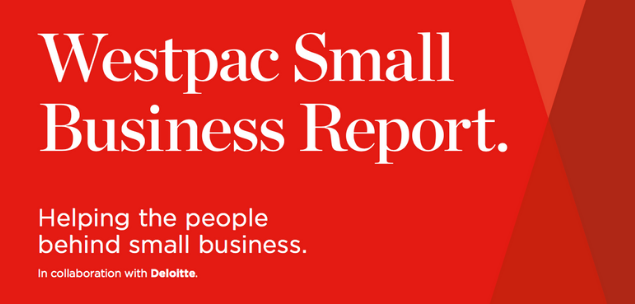The most recent Westpac Small Business Report shows there is an expectation from small business that the economy is likely to improve, but questions remain over when. This is a good time for small businesses to look for growth opportunities and consider how they can take advantage of the better days to come.
To achieve this some businesses will need to consider hiring new staff, and while this can be an exciting milestone for a growing business, it can also be daunting. The report highlights some of the major barriers to hiring new staff for small businesses.

This report is the third in a series and has been designed to better understand the needs of small businesses, as well as explain current market conditions to help you to operate with confidence. We have summarised the main findings for you, but you can also see the full report here.
The research is based on a survey of 500 Australian small businesses from all industries, as well as wider desktop research and consultations with successful small businesses conducted in May and June 2019.
Overall, small business conditions appear to be stabilising, after a fall in performance between December 2018 and March 2019.
Furthermore, the small business outlook is picking up, with a majority of respondents predicting growth in all categories of performance (revenue, number of customers, number of service offerings etc.) over the next 12 months.
Key stats and findings:
- The biggest fear for most small business owners is having no financial security
- The biggest barriers to hiring for small businesses are:
1. Financial
2. Lack of flexibility
3. Wages/penalty rates - Small business conditions are yet to fully improve – 61% are stable or growing, compared to 62% in March and 85% in December
- 2/3 of small business owners would like additional help
- 72% of small business owners who hire staff worry about the financial responsibility
- 34% of small business owners do not regularly contribute to their personal superannuation
- Small business revenue is growing. Top performing industries:
1. Admin and support services.
2. Manufacturing.
3. Arts and recreation services - Owning a small business is a big investment – 1/5 small business households have no income outside the business
- More than half use their personal savings to start/grow the business
- 1/3 of small business owners have a second job
- 2/3 For the average small business, around two thirds of household income comes from the business

For the last six months, small businesses have had it tough. Only three in five small businesses reported they were stable or growing in March, compared to more than four in five in December.
But that’s started to bottom out. Performance in June looks about the same as in March. And there’s light at the end of the tunnel, with small businesses expecting conditions to improve over the next 12 months. This could be partly because the federal election is over, and businesses can better plan their actions now that the political uncertainty is reduced.
So what’s next for small business? For many, it depends on economic conditions. Around 35% of those surveyed expect that interest
rates and economic growth will drive their performance.
There are some promising indicators on this front. The RBA has cut the cash rate twice in this quarter, which is good news for businesses looking to borrow. We have tentative signs that the Sydney and Melbourne housing markets are stabilising, and big spending on infrastructure brings opportunities.2 But it’s not all rosy. Conditions in the wider economy remain weak. With low wage growth, there’s less money to spend.
Regardless, small businesses are optimistic about the future.
Three in four businesses expect their income and the number of goods and services they o er to grow or be sustained over the next 12 months, relative to 67% and 69% who shared these opinions in March respectively.
This might be in part a result of the political dust settling. In March, only one in five small businesses felt optimistic prior to the federal election and two in five reported they were delaying decision making until after the big day. However, following the election, 50% feel optimistic (Chart 1.2).

1 “We define ‘successful businesses’ as the businesses in the sample that have the highest profit rates. However, we excluded businesses with annual revenue less than $100,000 as they can have very high profit given the low base.”
2 Treasury (2019), Budget 2019-20, available at: https://www.budget.gov.au/.
The information in this report is intended to be general in nature and should not be relied upon for personal financial use.


